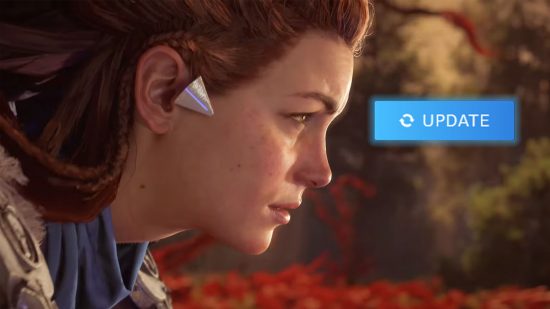As the weeks pass by since the Horizon Forbidden West launch, it’s only right to hope for a steady stream of updates to ensure the PC port plays as smoothly as possible. Sure enough, Nixxes has just issued the Horizon Forbidden West Complete Edition 1.3.55.0 update, bringing with it a particularly nice new feature in the shape of Intel XeSS 1.3.
Intel XeSS is big blue’s equivalent to Nvidia DLSS and AMD FSR, in that it provides a smarter way for games to render from a lower render resolution to a higher upscaled output resolution without putting a big dent in image quality. As a result, you can boost your Horizon Forbidden West frame rate while hardly noticing a difference in the look of the game.
The game has had Nvidia DLSS as an option since lanuch but that feature only works on Nvidia RTX graphics cards, such as the RTX 4070 Super. It has also had Intel XeSS, but this new update brings some key new features. Moreover, XeSS is compatible with AMD and Nvidia GPUs as well as Intel’s own integrated graphics and discrete Arc GPUs.
In theory, running XeSS on Intel GPUs provides a performance advantage over AMD and Nvidia graphics cards (all else being equal) as it can take advantage of the Xe Cores on Intel GPUs. However, given both AMD and Nvidia have much faster cards overall, it’s something of a moot point.
As for AMD FSR, this isn’t yet built into Horizon Forbidden West, with Nixxes suggesting it will wait until FSR 3.1 frame generation is improved before implementing that feature.
As for the performance boost you can expect using Intel XeSS, Nixxes doesn’t mention this. However, in general we’ve found that using an upscaling feature can result in significant performance gains, depending on the exact upscaling ratio, the upscaler used, and the game in question.
One of the key new additions of XeSS 1.3 is that it adds feature called XeSS Native AA. This is similar to Nvidia DLAA in that is uses some of the clever technology behind how DLSS/XeSS does its upscaling – by comparing data from previous frames to the current one – but instead of using this to increase the resolution of the final frame it just uses this to perform anti-aliasing. This will reduce the number of jagged lines and noticeable edges of onscreen elements such as foliage – crucial in a game like Horizon Forbidden West – making for a smoother-looking game.
As for other features in the 1.3.55.0 update, these include improved visual quality of dust effects and improvements to texture streaming to reduce memory usage and improve texture quality. The full list of release notes is below:
- Improved the visual quality of dust.
- Added Interface Text Size option in the General Settings menu.
- Improvements to texture streaming to reduce memory usage and improve quality.
- Updated Intel XeSS to version 1.3 with improved image quality and new XeSS Native AA option.
- Resolved performance regression when enabling NVIDA Reflex On+Boost.
- When using Quick Slot hotkeys to select weapons, the last used ammo type used will now be remembered.
- Improved smoothness of camera movement in Photo Mode when using the mouse.
- Removed hardcoded Mouse and Keyboard bindings for actions such as Navigation Assist in Focus Mode. They now listen to their respective remappable key bindings.
- Various optimizations and stability improvements.
- Various UI bugfixes.
If you’re yet to decide whether you will download and play Horizon Forbidden West, you can read our Horizon Forbidden West review to get more insight on the game. Or check out our list of the best open-world games for more recommendations for similar games.
